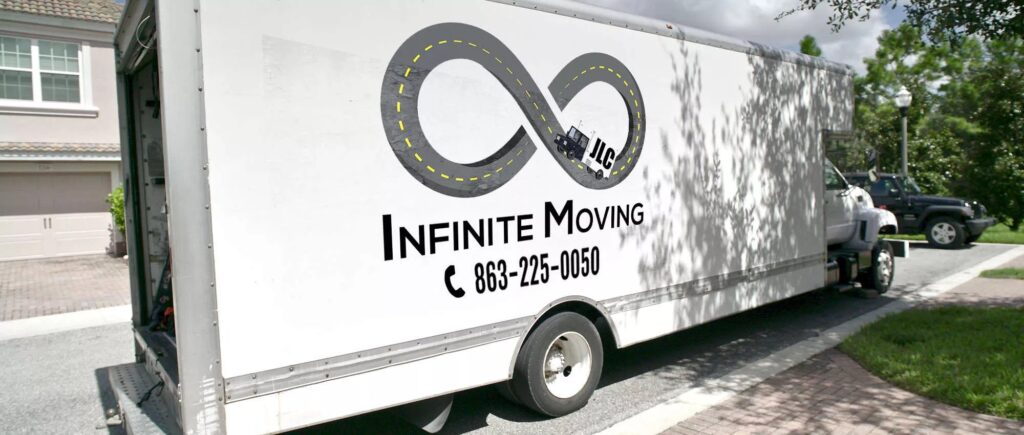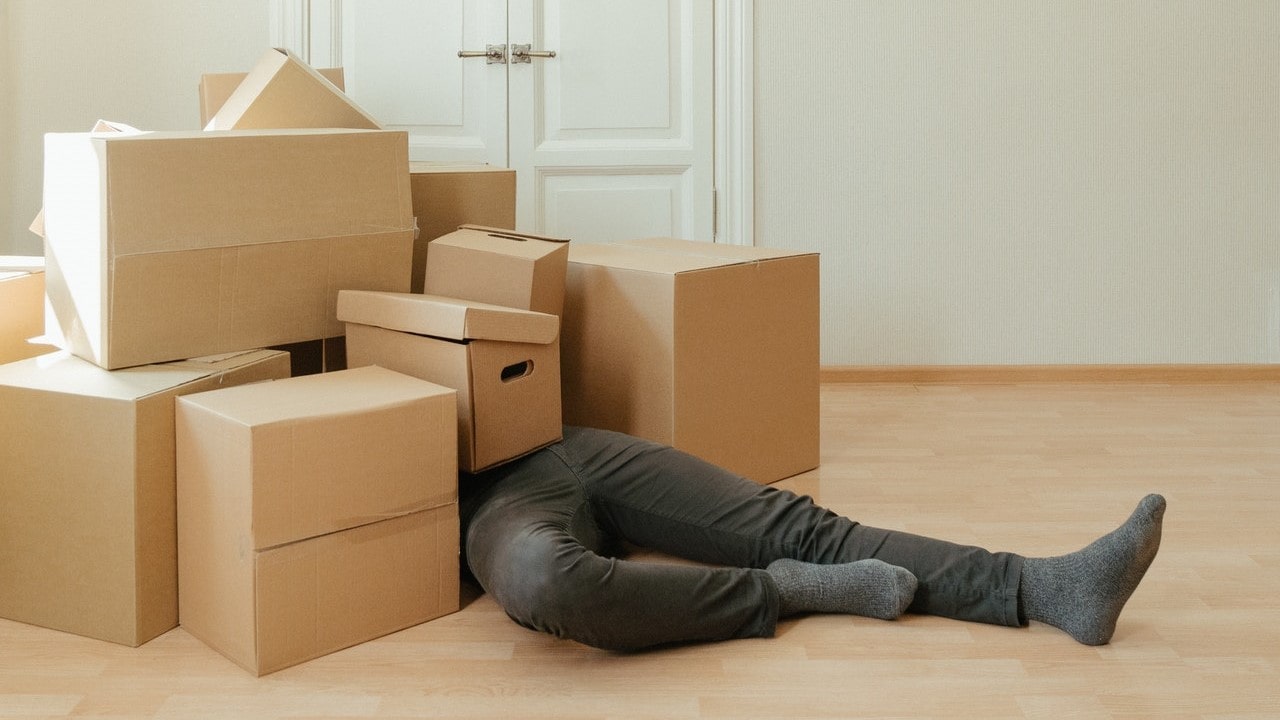This post is sponsored by Infinite Moving, a moving company serving the central Florida counties of Polk, Orange, Lake, and Osceola. Though I have been paid to write this post, all opinions below are my own.
Anyone who has ever moved before can tell you that moving is hard enough to accomplish without all the little things that seem to go wrong at the worst moments. Luckily, there is hope. Below is a survival guide filled with advice that may help you have a less stressful transition from one space to another.
The “Pre-Move”
Far too many people seem to be under the impression that moving starts the day the mover trucks show up. However, if you start packing a couple of weeks (or even a couple of months) beforehand, when moving day rolls around, the stress of packing and transitioning from place to place can decrease immensely. One study documented that, on average, it takes a college student 4-5 hours to pack up an entire dorm room. This is a general guideline as most people intend to move their entire house, not just one room. So for a four bedroom home, you may want to give yourself as many as 20 hours to pack up those four bedrooms, and then an additional 4 to 5 hours for every additional room (i.e. kitchen, dining room, den, sun room, etc…)
It’s also a good idea is to pack a suitcase. In it you should include all the things needed for roughly three to five days after the move. That way, you won’t have to be digging through boxes when you need a change of clothes.
p.s. – for my recent move earlier this year we created a meal plan to use everything we possibly could in our fridge, freezer, and pantry prior to our departure. This way we had less to transport from place to place. The further you move, the more critical it is to avoid bringing things that need to stay refrigerated/frozen. In our case, we moved 800 plus miles, so bringing anything cold just wasn’t feasible.
Pro Tip: Try to make sure you don’t need immediate access to your kitchenware and utensils right away.
We created a box of essentials that included paper napkins and plates, as well as disposable cups and utensils. Our meals for the first few days were heat and eat meals or sandwiches so we wouldn’t need to scrounge the kitchen boxes looking for pots and pans and plates. Planning ahead for this saved us from a lot of expensive takeout food!
We also had a “As soon as we arrive” bag that had things like hand soap, toilet paper, and other essentials we knew we would need at the ready for immediate use. If you only read this far, you’ll thank me if you use these tips.
Packing
It is a good idea to clearly mark all your boxes to save yourself time and confusion. Aim for two “open me first” boxes per room in your new space. Like it sounds, these boxes will hold all the things you will most likely need first in your new home.
Padding – A good space saver idea (and one that is green to boot!) is to use all of your fluffy towels and pillows to cushion delicate and fragile items such as china, DVD players, and even computers. We even used shirts, shorts, and socks for extra padding because the stuff had to be moved anyway, and saved us serious coin on that overpriced styrofoam cushioning we could have used! Of course, whichever boxes have breakables should be labeled as “Fragile” and always put them on top when stacking with the heavier boxes on the bottom.
Weight – Try to keep each box below 30 pounds whenever possible. Heavier boxes have a tendency to get dropped, rip, and generally hurting the people trying to move them.
Electronics – If you have a lot of complicated electronics in your house, try taking a picture of how they are hooked up before moving them. Then when the time comes to re-hook them up, you only have to look at the picture, and voila!
Heavy items – If you have things like a pool table, piano, or other heavy and bulky items, do yourself a favor and choose a moving company that can help you with things like this! For example, if you need pool table moving in Polk County, it’s best to call in professionals like Infinite Moving that are trained in heavy lifting.
These items are not only heavy, but they typically come with a large price tag. And, if you don’t want them damaged, using pros is key. Besides, promising pizza and beer to your friends in exchange for helping move these items is not going to go over well when cousin John or neighbor Alice pulls a muscle or throws out their back helping you move something far too heavy for amateurs!
Labels – Never label your boxes with a pencil. Instead, use a thick black or dark-colored marker, and always label your boxes on top and bottom. If one gets turned upside down, you will still know what it is. We also labeled ours on the sides so we could leave them stacked and easily see what was where.
The Movers

Finding really great movers can be tough, but it is not impossible. If you choose to go with professional movers, don’t be afraid to look around and ask questions. Talk with friends who have used this company or that business. Research the companies that catch your interest and never trust one simply because it is the “easiest” or the cheapest. Feel free to vet these companies by logging on to the Better Business Bureau and US Department of Public Transportation websites.
Also – check out my recent post, 10 Things to Look for In a Moving Company as you’re making your decision.
Unpacking
Once you have survived the moving process, and you and all you hold dear is now safely located at your new house, take a deep breath and relax. Give yourself a moment before you get back up and start unpacking. Although your move is technical “over,” the unpacking process has just begun. Like with the packing process, you will need to have a plan before you begin.
Priorities First – Always concentrate on the “Open me first” boxes for the bathroom and kitchen. These are usually the items you will truly “need” soon if not sooner.
Timetable – Set a specific number of boxes to be opened each day, and don’t stop until you have accomplished the task. Do yourself a favor and take the boxes to the recycle bin as quickly as possible so you don’t have to deal with a bunch of clutter on top of trying to unpack the rest of your belongings.
Pro Tip: It’s a good idea to have a plan for where everything will go before you unpack any boxes
Clean as you go – Trash bags should be kept on hand at all times for any newspaper, packing tape, and general trash. And, sanitize the area before you start filling it up.
A Few Tips To Make Moving Day Less Stressful

Having moved quite a few times myself, I know first hand how stressful moving can be. In my opinion, the packing and unpacking are the worst and most stressful.
Oftentimes, I would find myself standing in the middle of the room, spinning in circles while surveying the room, and wondering to myself, “Where do I begin?” That overwhelming feeling that comes over you when preparing for the big move can be daunting at times.
After the first few times I moved, I realized that I needed to become more organized. I had to find a better way to do it, and here’s what I came up with….
First of all, if you are planning on using a moving company such as Infinite Moving, or renting a moving truck to do it yourself, make your arrangements as soon as possible to reserve your time slot.
The easiest way I found to pack was to do it in “rounds.” What I mean by that is, start in one room and, doing each room individually, pack away the things you know for sure you will not need until after your move. This is round 1. Then, each week leading up to your move, do a sweep through of your house and pack away the things you know you can live without for the time being.
Not only will this help to lessen the stress of moving, but at this time, you can also decide to sell or give away the things you don’t ever use instead of moving them with you.
If you will be using cardboard boxes to pack your things, use a permanent marker and somewhere on the box, write the name of the room that the items in the box belong in. Then when you move, you can put the box in its designated room right away to make unpacking that much easier. If you are using plastic storage containers instead of boxes, pick up some cheap, easily removable labels to place on the containers and write the names of the rooms on the labels instead of writing it directly on the containers.
Another idea would be to mark each box with a number according to necessity. For instance, if the items in a box are personal toiletries, those would be something you would need to be unpacked right away, so you could mark that box with a “1” so you would know to unpack that box first. Then follow suit with the other boxes using the number “2” for items that you wouldn’t need to be unpacked right away but would need soon, and so on and so on.
If you have children, give them a box or two and have them pack up their own toys and personal belongings. This always works great with my kids. They love to help me out in any way they can, and they’re always so proud of what they’ve accomplished when they get their packing completed. Then when your move is over, and it’s time to unpack, the kids can then unpack and put away their own things.
Hopefully, the moving tips I’ve listed here will help to make your moving experience a little more pleasant, organized, and less stressful.







1 thought on “A Survival Guide To Moving”
Comments are closed.